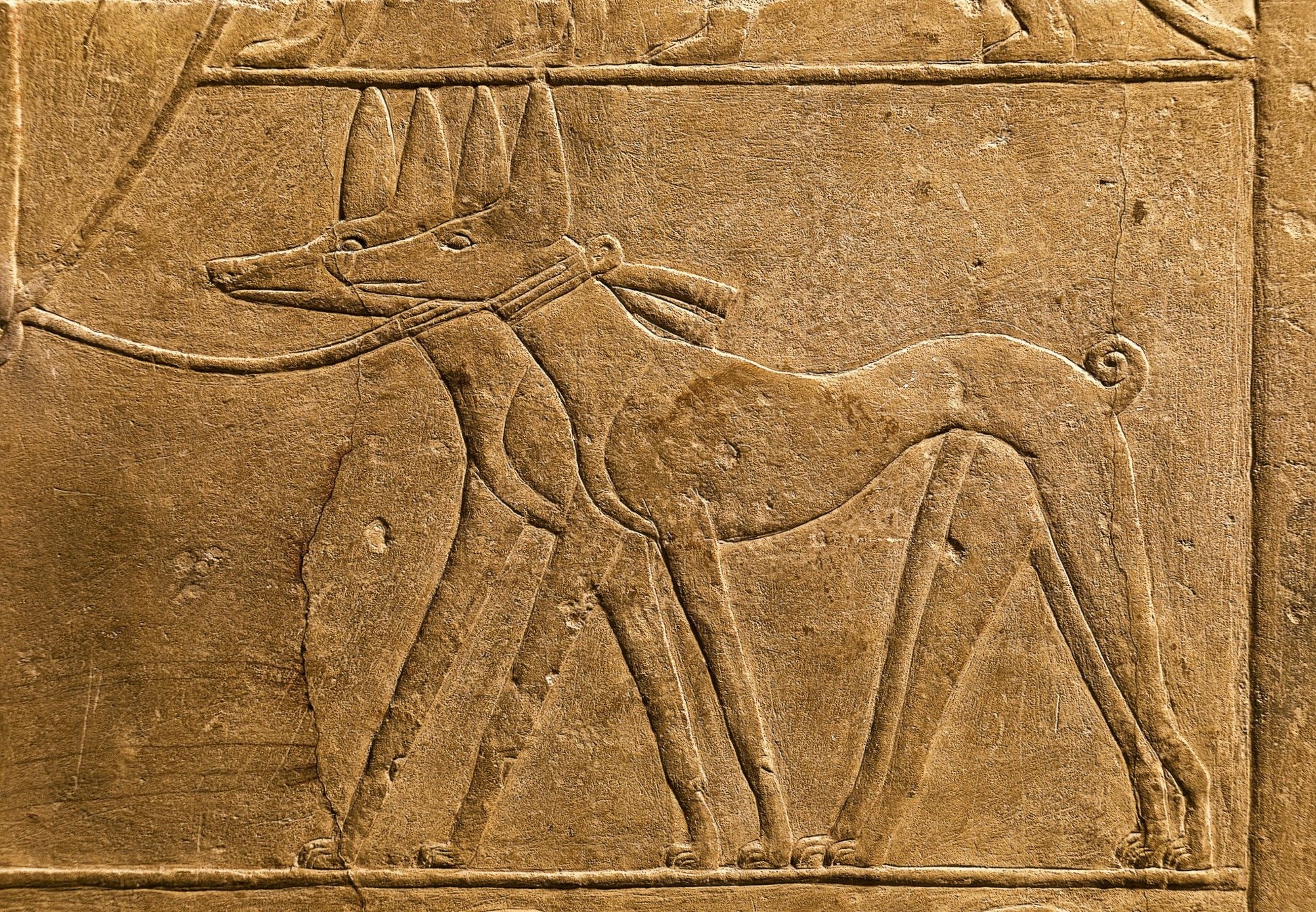Let's celebrate the great bond between the ancient Egyptians and their OTHER furry friends—the canine ones.
People often associate ancient Egypt with cats, however dogs were companions for the ancient Egyptians even before there was an Egypt. Around 3,300 B.C., when Egypt was a collection of village states along the Nile (Naqada II Period), paintings on pottery depict dogs that were clearly important to the villagers.
By the Old Kingdom (ca. 2600 B.C.) the Egyptians were having their pets depicted on the walls of their tombs, so that the owner and their furry friends could continue enjoying each other's company in the afterlife.
By now dogs were already 'man's best friend' - a faithful companion in the house and handy in the hunt. Numerous tomb scenes depict both pet and hunting dogs in close proximity to their masters and mistresses, sitting patiently under chairs or accompanying their owner at the hunt.
These dogs were known as Tesem, the Egyptian name for 'hunting dog'. They had a distinctive look: ears pricked, a narrow muzzle, long neck and legs, and a tightly-curled tail.
In 1906 a tomb (KV50) containing a mummified dog and baboon was discovered in the Valley of the Kings. It was speculated that the animals were the royal pets of the 18th Dynasty’s King Amenhotep II (c 1410 BC) who was buried nearby in KV35. American Painter, Joseph Lindon Smith, describes a visit to the tomb:
“The children never forgot their trip to the Valley of the Kings and a visit to Davis’ Animal Tomb ... They both laughed in their delight at the sight of yellow dog of ordinary life size, standing on its feet, his short tail curled over his back.”
Sadly, the Tesem are extinct. In ancient times, as today, dog breeds went in and out of favour. By the New Kingdom (ca. 1550 B.C.), the favoured hunting dogs were more robustly built, with a long-haired, uncurled tail. The breed of dog known as the Pharaoh Hound, despite the name, has no real link with ancient Egypt.
The above image comes from the tomb of Mereruka at Saqqara. Mereruka was the Vizier, or chief minister, to King Teti, the first pharaoh of the 6th Dynasty. This office made Mereruka the second most powerful person in Egypt.
As befitted his status, Mereruka was buried in an elaborate tomb at Saqqara; in fact the largest private tomb complex in Egypt. The reliefs in one chamber (A4) depict a baboon (you can just see the feet at the top of the photo) and two Tesem being led by a servant.
The National Dog Day website invites us to "... celebrate dogs and their varied talents ... both by taking the time to treat the dogs in your own life and by supporting dogs in need."
I couldn't agree more. However, the last word on dogs must go to their arch enemies, the cats:
"Women and cats will do as they please, and men and dogs should relax and get used to the idea.” Author, Robert A. Heinlein.
